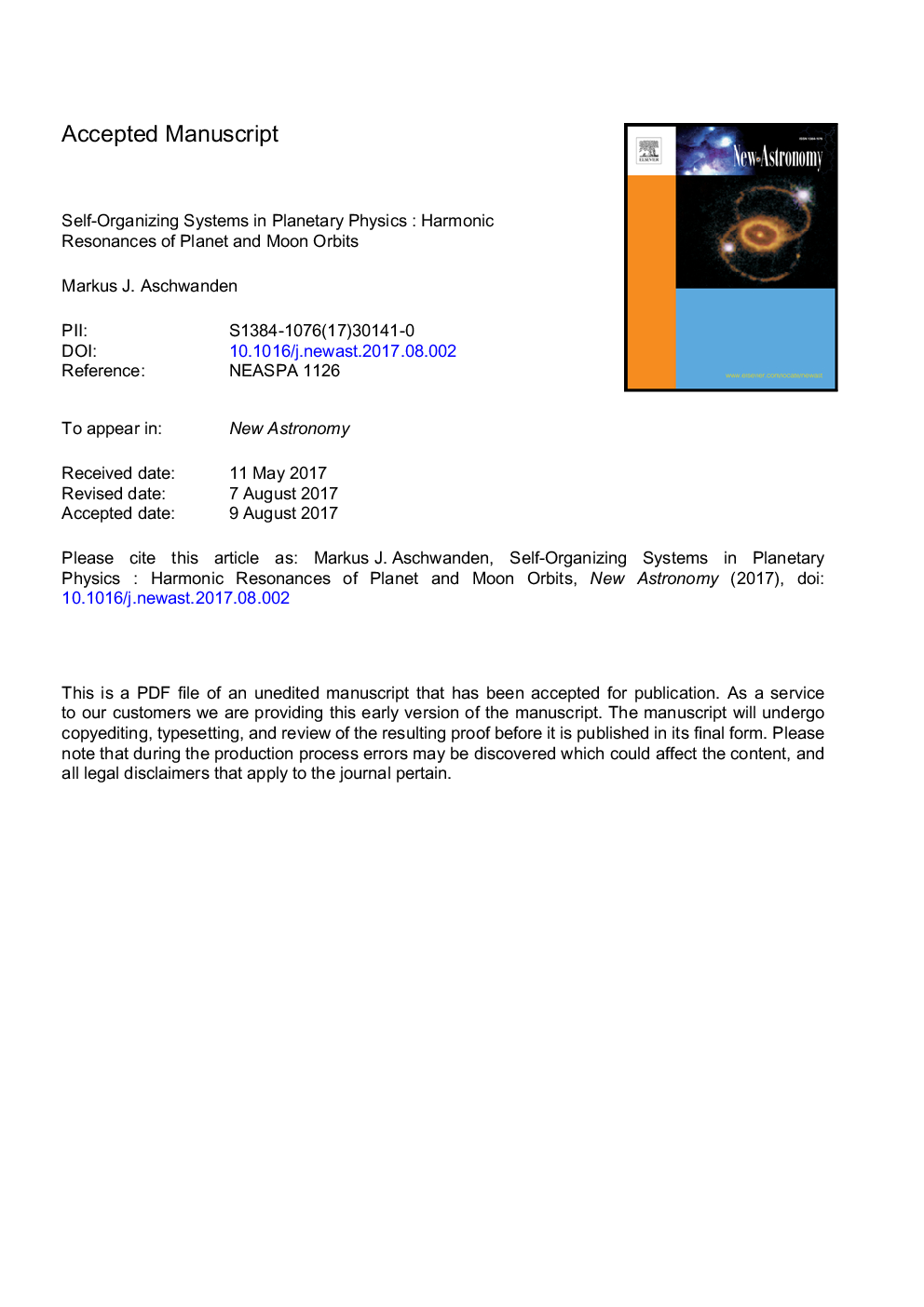| کد مقاله | کد نشریه | سال انتشار | مقاله انگلیسی | نسخه تمام متن |
|---|---|---|---|---|
| 5487760 | 1523720 | 2018 | 38 صفحه PDF | دانلود رایگان |
عنوان انگلیسی مقاله ISI
Self-organizing systems in planetary physics: Harmonic resonances of planet and moon orbits
ترجمه فارسی عنوان
سیستم های خودمراقبتی در فیزیک سیاره: رزونانس هارمونیک مدار سیاره و ماه
دانلود مقاله + سفارش ترجمه
دانلود مقاله ISI انگلیسی
رایگان برای ایرانیان
کلمات کلیدی
سیستم های سیاره ای، سیارات و ماهواره ها، عمومی، ستاره ها: فردی،
موضوعات مرتبط
مهندسی و علوم پایه
فیزیک و نجوم
نجوم و فیزیک نجومی
چکیده انگلیسی
The geometric arrangement of planet and moon orbits into a regularly spaced pattern of distances is the result of a self-organizing system. The positive feedback mechanism that operates a self-organizing system is accomplished by harmonic orbit resonances, leading to long-term stable planet and moon orbits in solar or stellar systems. The distance pattern of planets was originally described by the empirical Titius-Bode law, and by a generalized version with a constant geometric progression factor (corresponding to logarithmic spacing). We find that the orbital periods Ti and planet distances Ri from the Sun are not consistent with logarithmic spacing, but rather follow the quantized scaling (Ri+1/Ri)=(Ti+1/Ti)2/3=(Hi+1/Hi)2/3, where the harmonic ratios are given by five dominant resonances, namely (Hi+1:Hi)=(3:2),(5:3),(2:1),(5:2),(3:1). We find that the orbital period ratios tend to follow the quantized harmonic ratios in increasing order. We apply this harmonic orbit resonance model to the planets and moons in our solar system, and to the exo-planets of 55 Cnc and HD 10180 planetary systems. The model allows us a prediction of missing planets in each planetary system, based on the quasi-regular self-organizing pattern of harmonic orbit resonance zones. We predict 7 (and 4) missing exo-planets around the star 55 Cnc (and HD 10180). The accuracy of the predicted planet and moon distances amounts to a few percents. All analyzed systems are found to have â¯ââ¯10 resonant zones that can be occupied with planets (or moons) in long-term stable orbits.
ناشر
Database: Elsevier - ScienceDirect (ساینس دایرکت)
Journal: New Astronomy - Volume 58, January 2018, Pages 107-123
Journal: New Astronomy - Volume 58, January 2018, Pages 107-123
نویسندگان
Markus J. Aschwanden,
